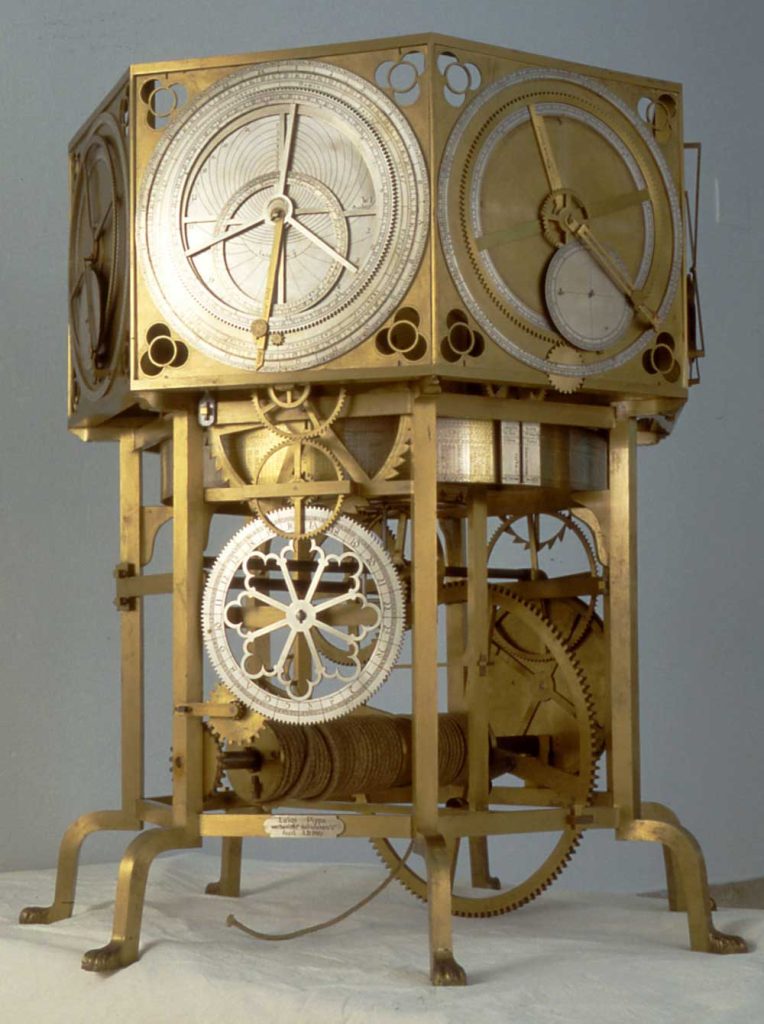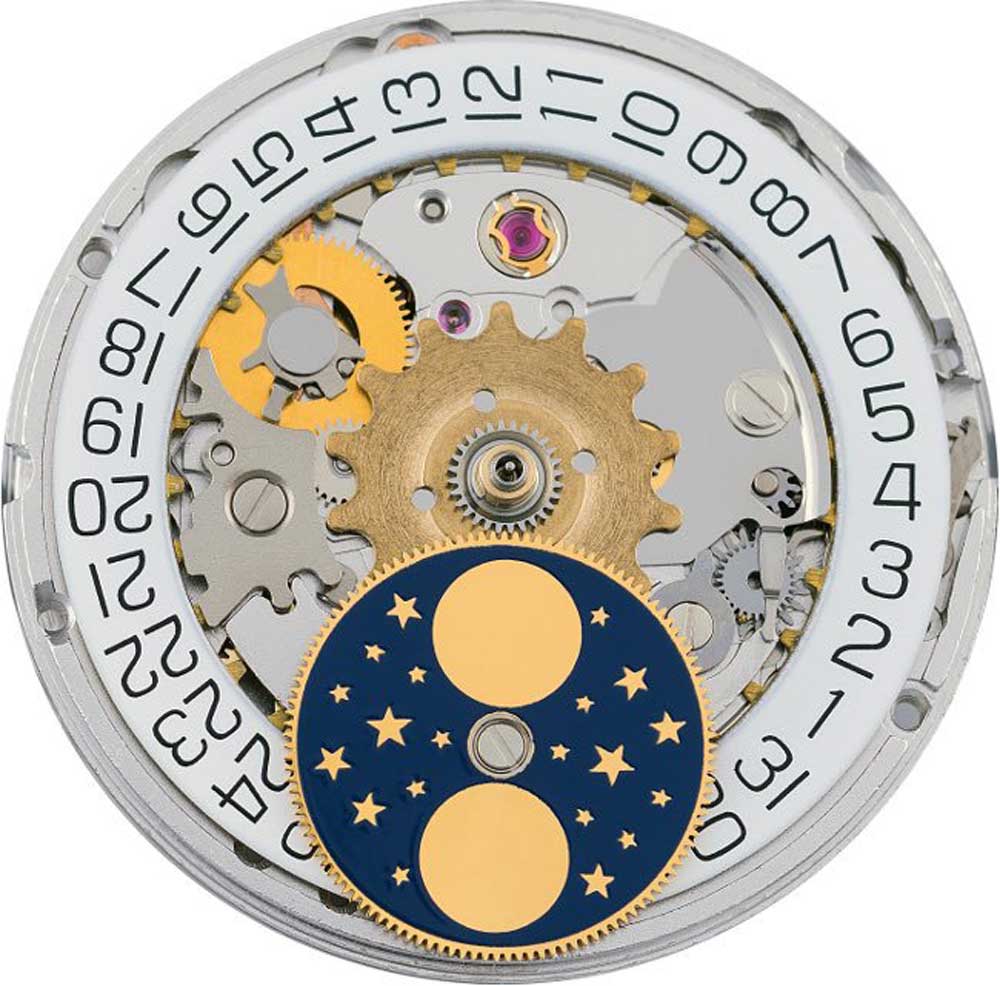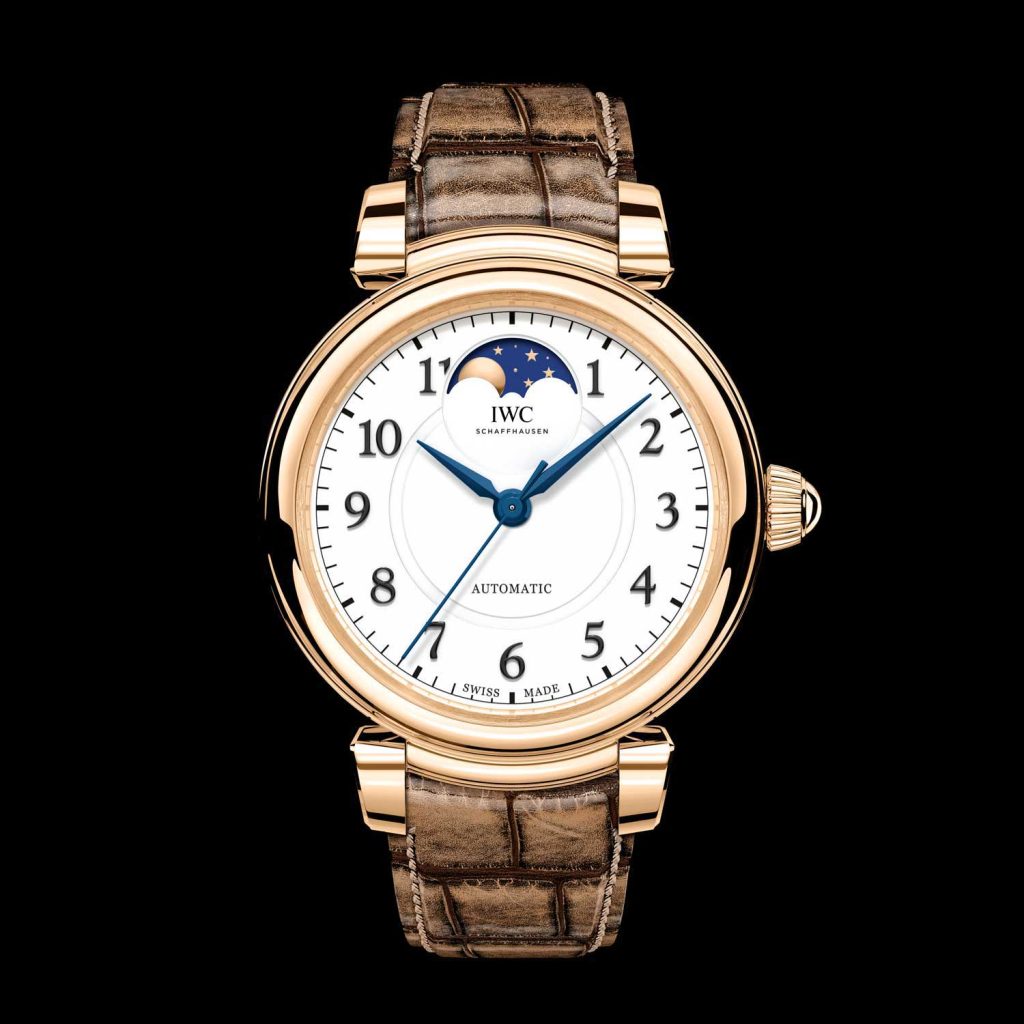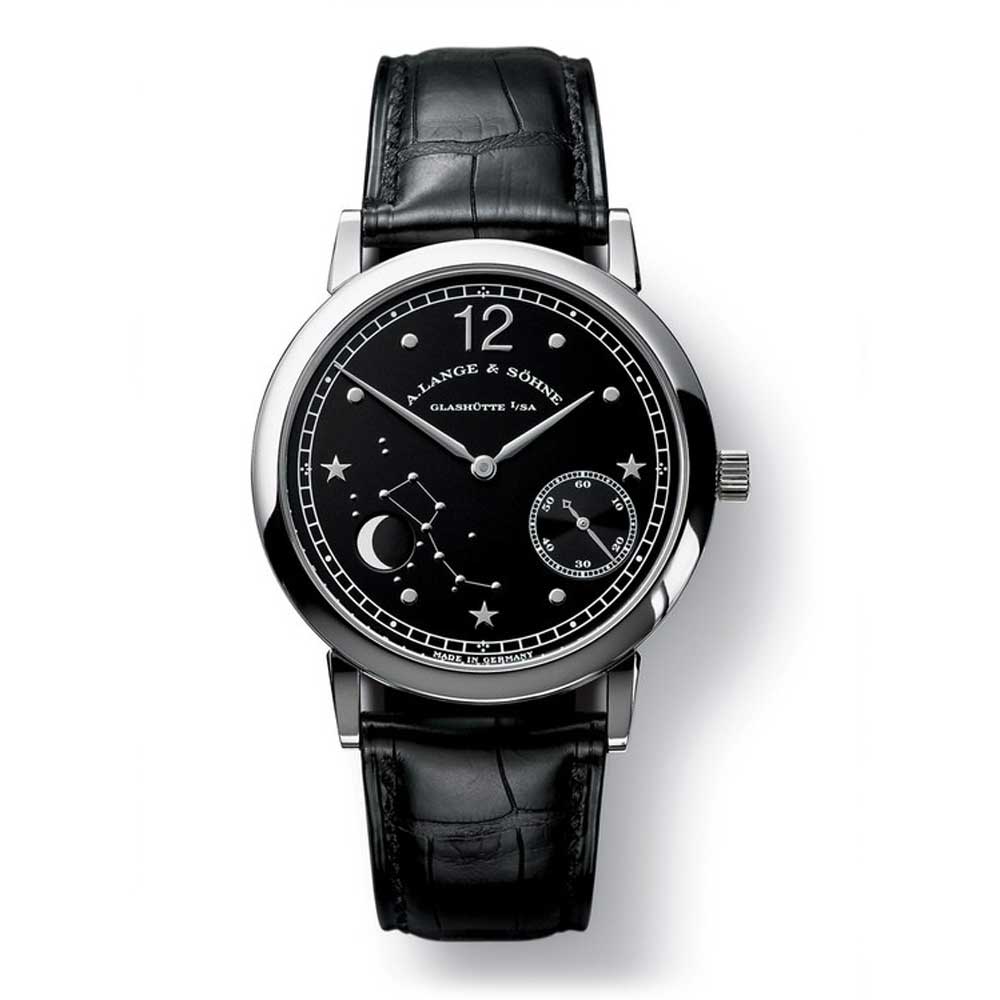A. Lange & Söhne
The Moon Phase Watch
In the 14th century, Giovanni de Dondi’s Astrarium clock showed the time, movements of the planets, stars, moon and moon’s nodes, and an annual calendar. In the 17th century, English watchmaker Simon Bartram made a pendant watch with a rock crystal see-through case, housing a moon phase display as well as indications for calendar, day of the week and the sign of the zodiac.

Giovanni de Dondi’s Astrarium, completed in 1364, had seven faces, one each to display the movements of the sun, moon, and five planets
Simple Moon Phase
The usual method of displaying the phases of the moon is by using a revolving disc that has two images of the moon on it, moving into and out of a cut-out in the dial, so that, as the moon in the heavens is waxing, the disc on your wrist is creeping into full view; and as the moon wanes, the displayed moon disappears again.
The problem in displaying the phases of the moon is that a watch has a gear train oriented around a 24-hour day, and the full lunar month is not a whole number of days long. The synodic month, or number of days it takes for the moon to return to the same phase, is approximately 29.5 days. If the lunar month were exactly 29 or 30 days in length, matters would be simple — just have a disk with 29 or 30 teeth, advance the disc one tooth per day, and you’d be in business; but 29.5 days presents a problem in that you can’t put half a tooth on a gear.

Sellita SW280-1 with moon phase
Unfortunately, nothing in astronomy is ever quite that straightforward — the lunar month is approximately – not exactly – 29.5 days in length, which means that a conventional 59-tooth moon phase display will gradually drift out of alignment with the actual moon, to the tune of roughly a day every 33 months.
High Accuracy Moon Phase Displays
The one-day error every couple of years is accurate enough for many people: the moon phase display just isn’t as “mission critical” as it used to be. But while watchmaking isn’t a furious torrent of innovation that characterises the infotech sphere, watchmakers don’t sit very long on past laurels either and it didn’t take long for companies to obliterate this margin of error, at least shrinking it to insignificance.

IWC Da Vinci Automatic Moon Phase 36
Similarly, A. Lange & Söhne has implemented several variations on the moon phase complication — the Lange 1 Moonphase watch is accurate to within one day in 122 years, and the Lange 1815 Moonphase goes one better over its sibling by achieving an accuracy of one day’s error in 1,058 years!

Lange 1815 Moonphase










